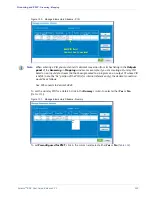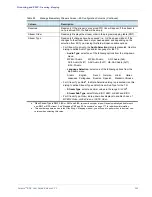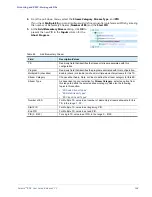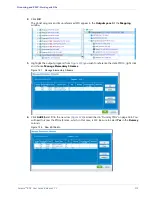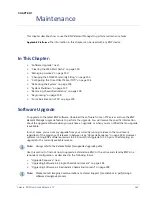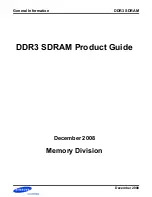
Selenio
TM
BNP User Guide, Release 3.7.1
170
- Working with PIDs
Elementary Stream Ghost PID Management
Ghost programs and PIDs are extra input and output streams not referenced in a Program Association
Table (PAT). The BNP allows you to manage elementary stream (ES) Ghost PIDs in three ways:
•
Unreferenced PID Pass Through.
The PID output is unreferenced in the Program Mapping Table
(PMT) nor is there any mapping to any other program or transport stream table. Typical
applications are Data PID transport and grooming.
•
Unreferenced PID Mapping.
This has no reference in the PMT, but is mapped as a table entry in
the PAT at the transport stream level. This is used in various electronic program guide (EPG)
applications.
•
Referenced PID Mapping.
The PID output is referenced as a PMT entry. A typical application
might be to associate EPG data with one or more programs.
Unreferenced PIDs streams are those MPEG-2 streams encapsulated in the MPEG-2 SPTS or MPTS but
their PIDs are not referenced in any PSI (PAT and PMT) tables. These unreferenced PID streams may be
purposely inserted for some special control and applications; they could also result from the stream
originator's error.
Unreferenced PIDs can come from the program inputs from GigE interfaces or from ASI inputs. In some
applications, these unreferenced PIDs need to be routed to the appropriate output GigE ports or ASI
ports as pass-through without or with PIDs remapping. In other cases, these unreferenced PIDs need to
be dropped, either because such unreferenced PIDs are not needed or the streams are corrupted.
The BNP allows you to add and drop the unreferenced PIDs in its inputs from both GigE and ASI ports.
The BNP can groom the unreferenced PIDs from the inputs to the appropriate output transport stream
(SPTS or MPTS) with or without PID remapping using the GUI configuration for the unreferenced PIDs.
Unreferenced PIDs associated with program inputs are usually known in advance, so they can be
configured through the GUI for pass-through or drop. The GUI enables the user-configurable
remapping as an output PID for the input unreferenced PID; the output PID can also be referenced in
the output TS when necessary through GUI configuration.
For input ASI ports, the TS is automatically created for the input ASI port. User-configured
unreferenced PID streams are routed based on grooming rules.
The BNP guarantees there is no conflict between the unreferenced PIDs and the referenced PIDs in its
output MPTS or SPTS. If there are unreferenced PIDs causing conflict in the output MPTS or SPTS, then
the groomed unreferenced PID causing the conflict is dropped. This could happen when an
unreferenced PID is not allowed to be remapped for output.




